Building Energy Saving for Indoor Cooling and Heating: Mechanism and Comparison on Temperature Difference
Abstract
1. Introduction
2. Methodology
2.1. Building Thermal Model
2.2. Air Conditioning Model
2.3. Illustrative Example
3. Results
3.1. Energy Consumption
3.1.1. Cooling
3.1.2. Heating
3.2. Cooling Energy Saving
3.2.1. Daily Scale
3.2.2. Hourly Scale
3.3. Heating Energy Saving
3.3.1. Daily Scale
3.3.2. Hourly Scale
4. Discussion: Comparison between Cooling and Heating
5. Conclusions
- (1)
- Two types of energy-saving amount (ESA) were designated: heat transfer temperature difference-based ESA and behavioral/operation-based ESA. For heating, the energy-saving mechanism mainly lies in the heat transfer of indoor–outdoor temperature difference, while for cooling, it shifts to behavioral energy saving by rational indoor temperature set-point determination.
- (2)
- The monthly variations of cooling or heating consumption vary widely. The monthly cooling consumption is higher in summer but lower in the transition seasons and approaches zero in winter. The monthly heating consumption shows an inverse change trend.
- (3)
- The yearly ESR is the weighted average value of the hourly ESR, which is determined by the hourly distribution of cooling or heating energy-saving effect throughout the year. Therefore, the yearly ESR is closer to the hourly ESR by a large proportion.
- (4)
- Indoor and outdoor temperatures impact not only the building load demands inside, but also the operation efficiency of air conditioning systems. These two coupling influence factors significantly determine the practical building air conditioning energy consumptions, with different impact sensitivities for cooling and heating, respectively.
- (5)
- With local climate consideration, the comparison results illustrate that with the rising city yearly average temperature, the heating energy usage increases, whereas cooling consumption decreases. In addition, heating energy consumption seems more sensitive to outdoor temperature variations in China.
Author Contributions
Funding
Data Availability Statement
Conflicts of Interest
Nomenclature
| COP | Coefficient of performance |
| CTM | Characteristic temperature method |
| EC | Energy consumption |
| ESA | Energy saving amount |
| ESR | Energy saving ratio |
| HVAC | Heating ventilation and air conditioning |
| ST | Setting temperature |
References
- Gaglia, A.G.; Dialynas, E.N.; Argiriou, A.A. Energy performance of European residential buildings: Energy use, technical and environmental characteristics of the Greek residential sector—Energy conservation and CO2 reduction. Energy Build. 2019, 183, 86–104. [Google Scholar] [CrossRef]
- Al-Marri, W.; Al-Habaibeh, A.; Watkins, M. An investigation into domestic energy consumption behaviour and public awareness of renewable energy in Qatar. Sustain. Cities Soc. 2018, 41, 639–646. [Google Scholar] [CrossRef]
- Bourdeau, M.; Zhai, X.Q.; Nefzaoui, E.; Guo, X.F.; Chatellier, P. Modeling and forecasting building energy consumption: A review of data-driven techniques. Sustain. Cities Soc. 2019, 48, 101533. [Google Scholar] [CrossRef]
- Gao, H.; Koch, C.; Wu, Y.P. Building information modelling based building energy modelling: A review. Appl. Energy 2019, 238, 320–343. [Google Scholar] [CrossRef]
- Pokhrel, R.; Gonzalez, J.E.; Ramamurthy, P.; Comarazamy, D. Impact of building energy mitigation measures on future climate. Atmosphere 2023, 14, 463. [Google Scholar] [CrossRef]
- Ding, P.; Li, J.; Xiang, M.L.; Cheng, Z.; Long, E.S. Dynamic heat transfer calculation for ground-coupled floor in emergency temporary housing. Appl. Sci. 2022, 12, 11844. [Google Scholar] [CrossRef]
- Darlington Mushore, T.; Odindi, J.; Dube, T.; Mutanga, O. Understanding the relationship between urban outdoor temperatures and indoor air-conditioning energy demand in Zimbabwe. Sustain. Cities Soc. 2017, 34, 97–108. [Google Scholar] [CrossRef]
- Carreira, P.; Aguiar Costa, A.; Mansur, V.; Arsénio, A. Can HVAC really learn from users? A simulation-based study on the effectiveness of voting for comfort and energy use optimization. Sustain. Cities Soc. 2018, 41, 275–285. [Google Scholar] [CrossRef]
- Zheng, Y.H.; Si, P.F.; Zhang, Y.; Shi, L.J.; Huang, C.J.J.; Huang, D.S.; Jin, Z.N. Study on the effect of radiant insulation panel in cavity on the thermal performance of broken-bridge aluminum window frame. Buildings 2023, 13, 58. [Google Scholar] [CrossRef]
- Jin, Z.N.; Zheng, Y.H.; Zhang, Y. A novel method for building air conditioning energy saving potential pre-estimation based on thermodynamic perfection index for space cooling. J. Asian Archit. Build. Eng. 2023, 22, 2348–2364. [Google Scholar] [CrossRef]
- Qi, X.Y.; Zhang, Y.; Jin, Z.N. Building energy efficiency for indoor heating temperature set-point: Mechanism and case study of mid-rise apartment. Buildings 2023, 13, 1189. [Google Scholar] [CrossRef]
- Moreci, E.; Ciulla, G.; Lo Brano, V. Annual heating energy requirements of office buildings in a European climate. Sustain. Cities Soc. 2016, 20, 81–95. [Google Scholar] [CrossRef]
- Park, Y.S.; Jeong, J.H.; Ahn, B.H. Heat pump control method based on direct measurement of evaporation pressure to improve energy efficiency and indoor air temperature stability at a low cooling load condition. Appl. Energy 2014, 132, 99–107. [Google Scholar] [CrossRef]
- Yang, B.; Sekhar, C.; Melikov, A.K. Ceiling mounted personalized ventilation system in hot and humid climate—An energy analysis. Energy Build. 2010, 42, 2304–2308. [Google Scholar] [CrossRef]
- Hoyt, T.; Arens, E.; Zhang, Z.H. Extending air temperature setpoints: Simulated energy savings and design considerations for new and retrofit buildings. Build. Environ. 2015, 88, 89–96. [Google Scholar] [CrossRef]
- Aynsley, R. Quantifying the cooling sensation of air movement. Int. J. Vent. 2008, 7, 67–76. [Google Scholar] [CrossRef]
- Walikewitz, N.; Janicke, B.; Langner, M.; Meier, F.; Endlicher, W. The difference between the mean radiant temperature and the air temperature within indoor environments: A case study during summer conditions. Build. Environ. 2015, 84, 151–161. [Google Scholar] [CrossRef]
- Munoz, F.; Sanchez, E.N.; Xia, Y.D.; Deng, S.M. Real-time neural inverse optimal control for indoor air temperature and humidity in a direct expansion (DX) air conditioning (A/C) system. Int. J. Refrig. 2017, 79, 196–206. [Google Scholar] [CrossRef]
- Yan, H.X.; Xia, Y.D.; Deng, S.M. Simulation study on a three-evaporator air conditioning system for simultaneous indoor air temperature and humidity control. Appl. Energy 2017, 207, 294–304. [Google Scholar] [CrossRef]
- Yan, H.X.; Xia, Y.D.; Xu, X.D.; Deng, S.M. Inherent operational characteristics aided fuzzy logic controller for a variable speed direct expansion air conditioning system for simultaneous indoor air temperature and humidity control. Energy Build. 2018, 158, 558–568. [Google Scholar] [CrossRef]
- Ghahramani, A.; Zhang, K.; Dutta, K.; Yang, Z.; Becerik-Gerber, B. Energy savings from temperature setpoints and deadband: Quantifying the influence of building and system properties on savings. Appl. Energy 2016, 165, 930–942. [Google Scholar] [CrossRef]
- Asif, A.; Zeeshan, M.; Jahanzaib, M. Indoor temperature, relative humidity and CO2 levels assessment in academic buildings with different heating, ventilation and air-conditioning systems. Build. Environ. 2018, 133, 83–90. [Google Scholar] [CrossRef]
- Wang, D.J.; Xu, Y.C.; Liu, Y.F.; Wang, Y.Y.; Jiang, J.; Wang, X.W.; Liu, J.P. Experimental investigation of the effect of indoor air temperature on students’ learning performance under the summer conditions in China. Build. Environ. 2018, 140, 140–152. [Google Scholar] [CrossRef]
- Bekdas, G.; Aydin, Y.; Isikdag, U.; Sadeghifam, A.N.; Aidin, N.; Kim, S.; Geem, Z.W. Prediction of cooling load of tropical buildings with machine learning. Sustainability 2023, 15, 9061. [Google Scholar] [CrossRef]
- Li, Y.Y.; Li, H.J.; Miao, R.; Qi, H.; Zhang, Y. Energy-Environment-Economy (3E) analysis of the performance of introducing photovoltaic and energy storage systems into residential buildings: A case study in Shenzhen, China. Sustainability 2023, 15, 9007. [Google Scholar] [CrossRef]
- Sibill, M.; Touibi, D. Abanda FH, Rethinking abandoned buildings as positive energy buildings in a former industrial site in Italy. Energies 2023, 16, 4503. [Google Scholar] [CrossRef]
- Adsetts, J.R.; Ebrahimi, N.; Zhang, J.Y.; Jalaei, F.; Noel, J.J. Improving the energy efficiency of public utility buildings in Poland through thermomodernization and renewable energy sources—A case study. Coatings 2023, 13, 850. [Google Scholar] [CrossRef]
- Hung, L.C.; Pan, N.H. Thermal stability, kinetic analysis, and safe temperature assessment of ionic liquids 1-Benzyl-3-Methylimidazolium Bis (Trifluoromethylsulfonyl) imide for emerging building and energy related field. Processes 2023, 11, 1121. [Google Scholar] [CrossRef]
- Long, E.S. Research on the influence of air humidity on the annual heating or cooling energy consumption. Build. Environ. 2005, 40, 571–578. [Google Scholar]
- Guo, S.R.; Yang, H.Y.; Li, Y.R.; Zhang, Y.; Long, E.S. Energy saving effect and mechanism of cooling setting temperature increased by 1 °C for residential buildings in different cities. Energy Build. 2019, 202, 109335. [Google Scholar] [CrossRef]
- Li, Y.R.; Long, E.S.; Jin, Z.H.; Li, J.; Meng, X.; Zhou, J.; Xu, L.T.; Xiao, D.T. Heat storage and release characteristics of composite phase change wall under different intermittent heating conditions. Sci. Technol. Built Environ. 2019, 25, 336–345. [Google Scholar] [CrossRef]
- Xu, L.T.; Long, E.S.; Wei, J.C. Study on the limiting height of rooftop solar energy equipment in street canyons under the cityscape constraints. Sol. Energy 2020, 206, 1–7. [Google Scholar] [CrossRef]
- Li, J.; Zhang, Y.; Ding, P.; Long, E.S. Experimental and simulated optimization study on dynamic heat discharge performance of multi-units water tank with PCM. Indoor Built Environ. 2021, 30, 1531–1545. [Google Scholar] [CrossRef]
- Deng, J.W.; Wei, Q.P.; Liang, M.; He, S.; Zhang, H. Does heat pumps perform energy efficiently as we expected: Field tests and evaluations on various kinds of heat pump systems for space heating. Energy Build. 2019, 182, 172–186. [Google Scholar] [CrossRef]
- Xu, Z.W.; Li, H.; Shao, S.Q.; Xu, W.; Wang, Z.C.; Gou, X.X.; Zhao, M.Y.; Li, J.D. Investigation on the efficiency degradation characterization of low ambient temperature air source heat pump under partial load operation. Int. J. Refrig. 2021, 133, 99–110. [Google Scholar] [CrossRef]
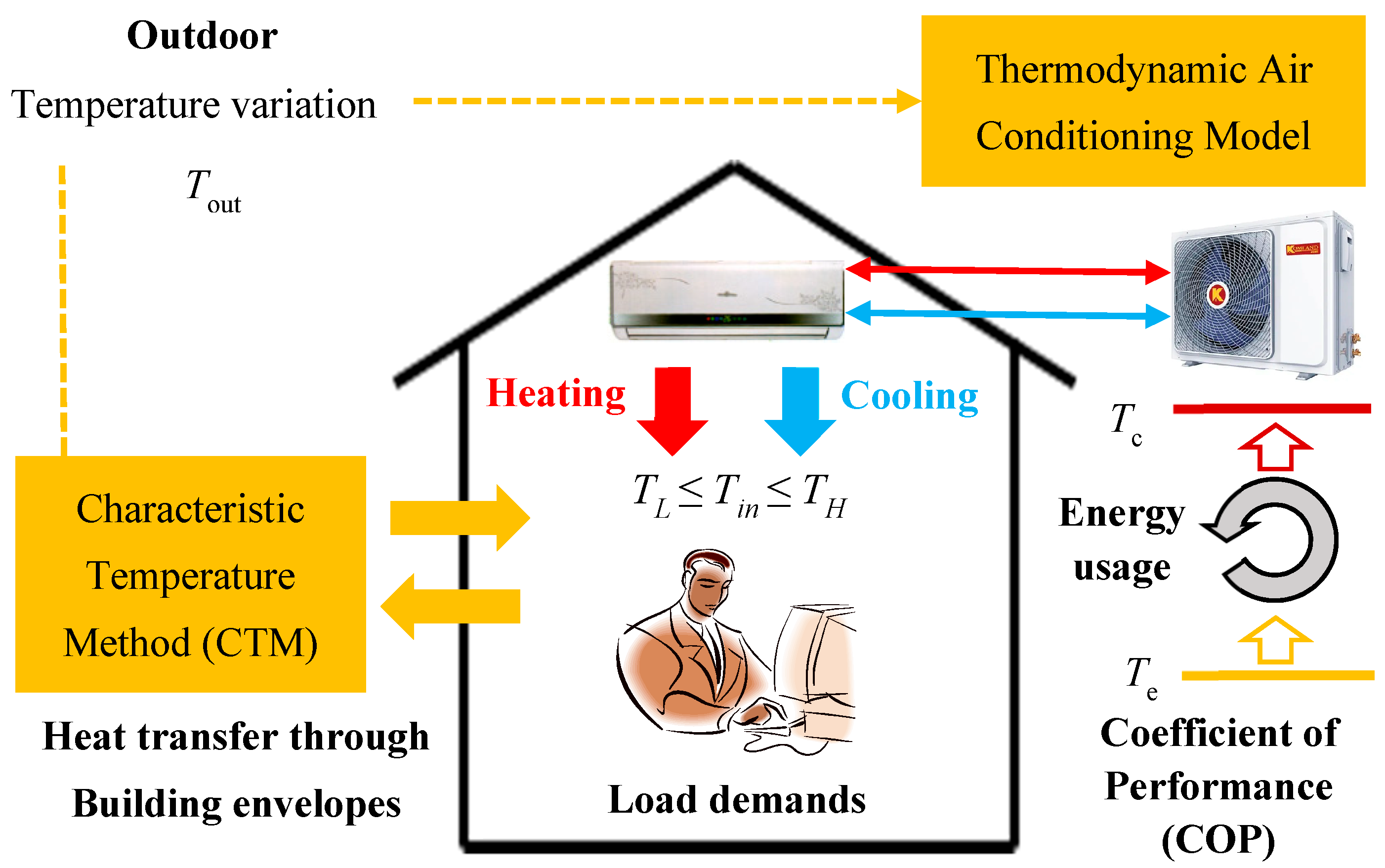
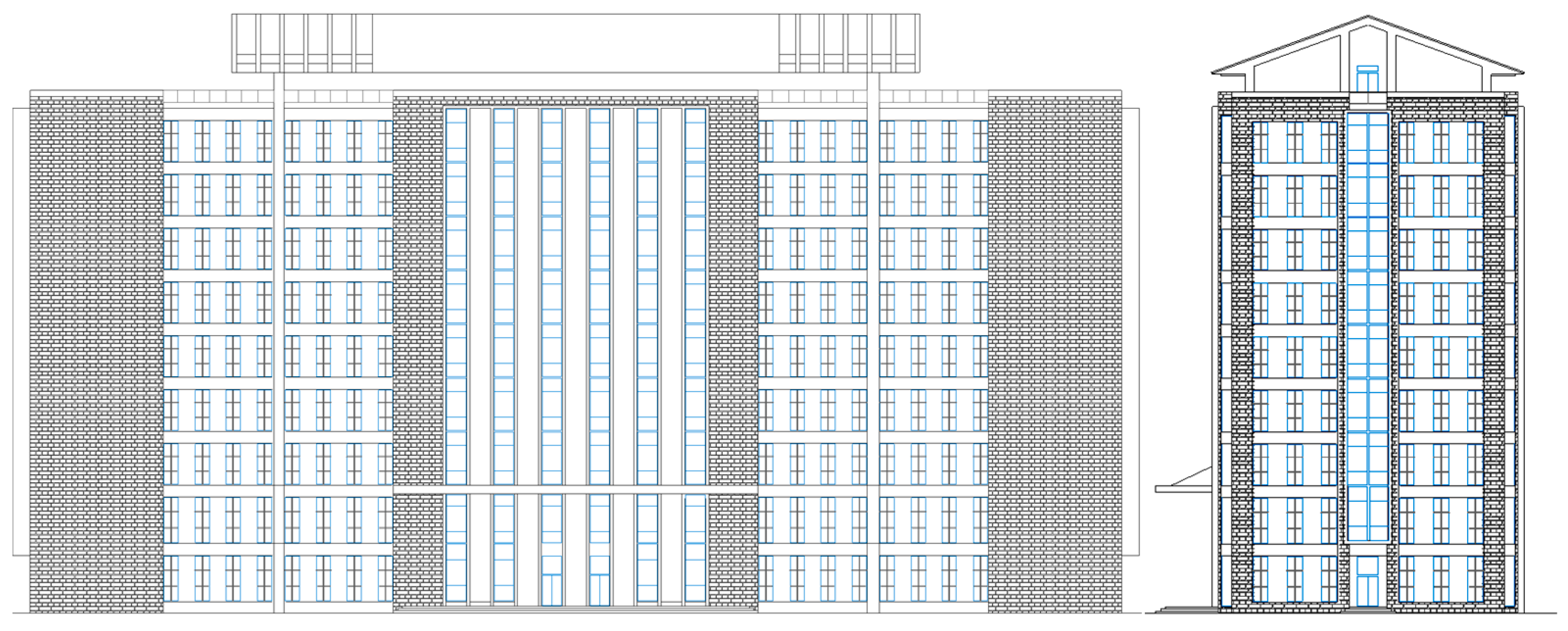

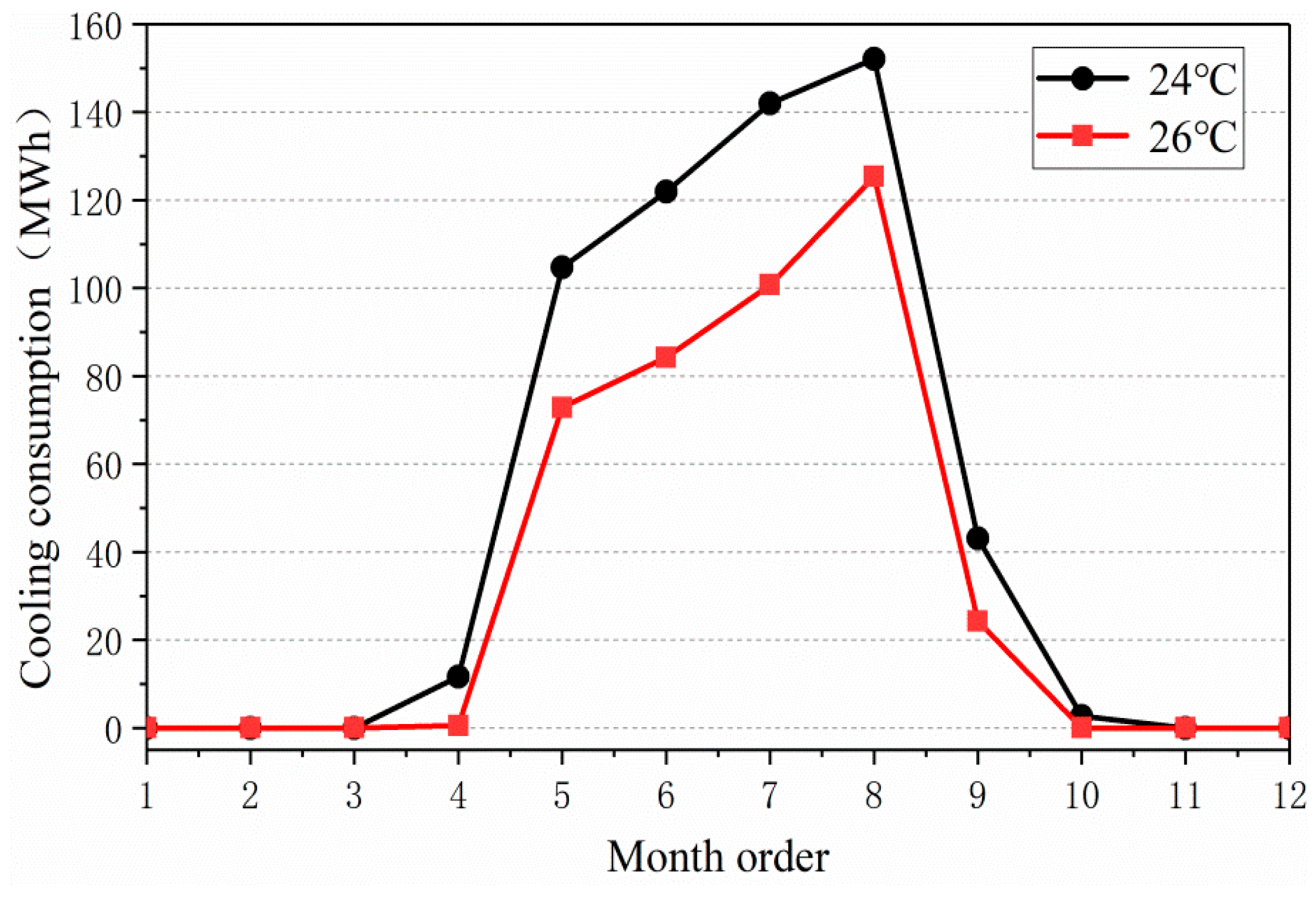

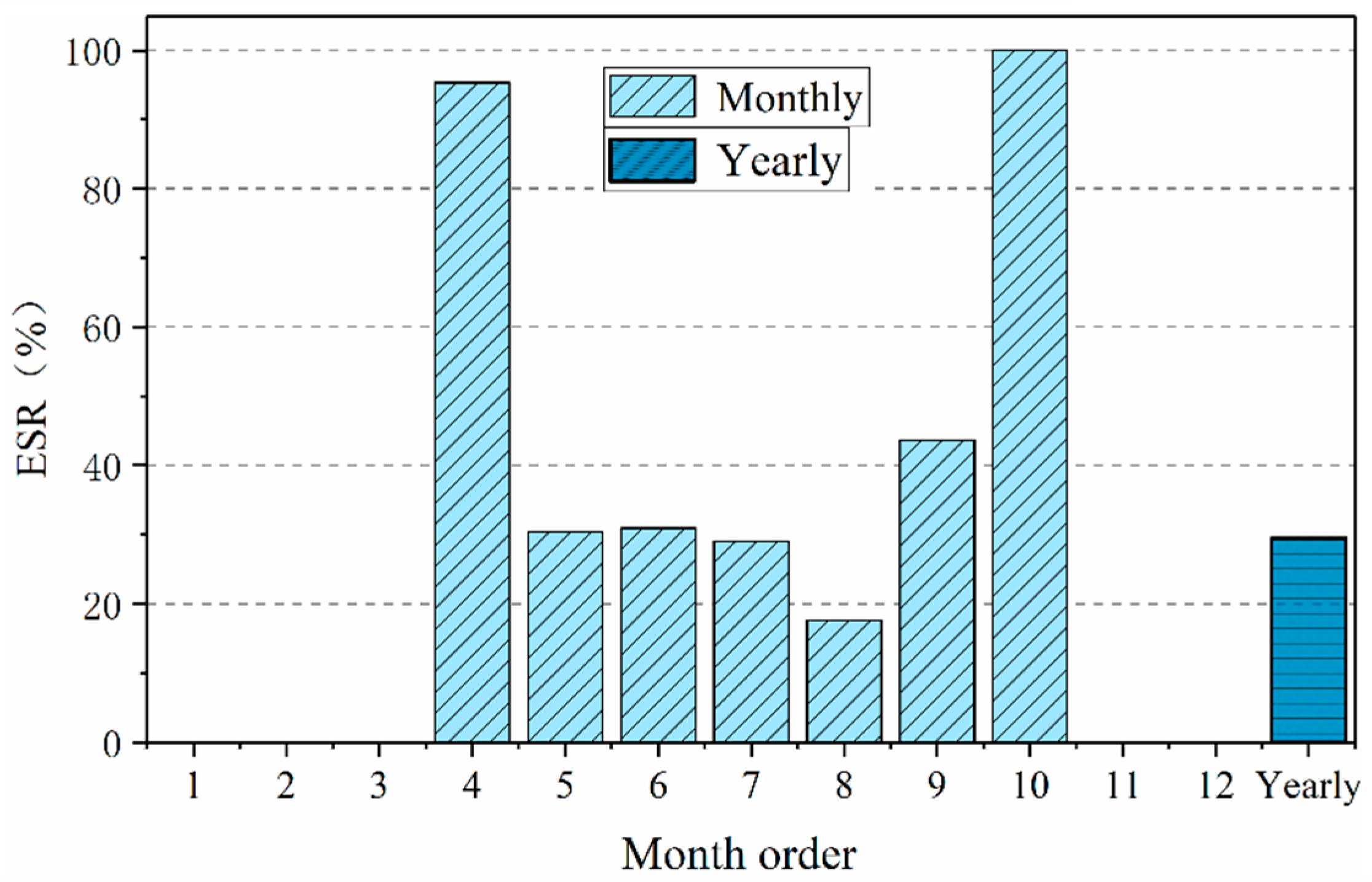

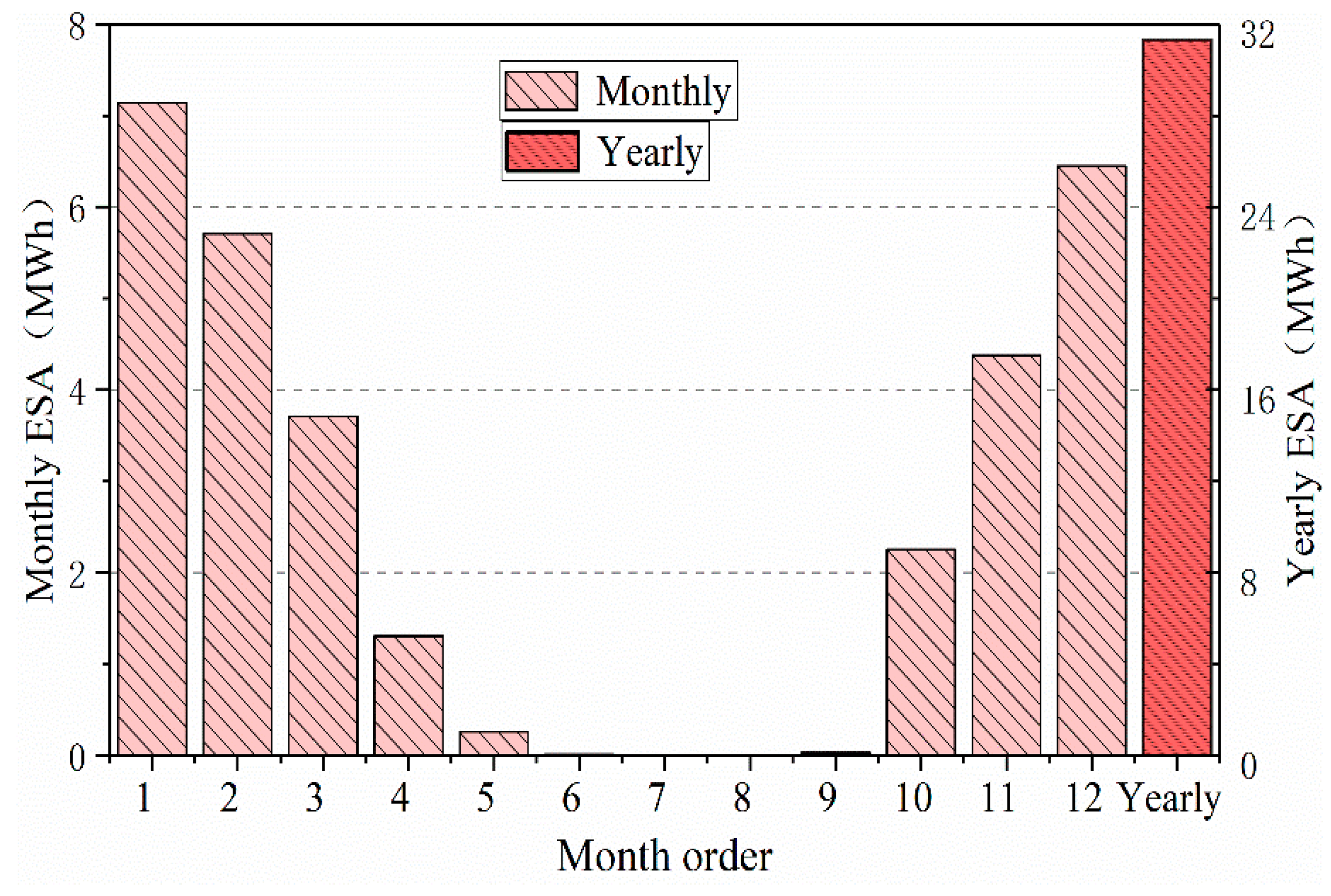
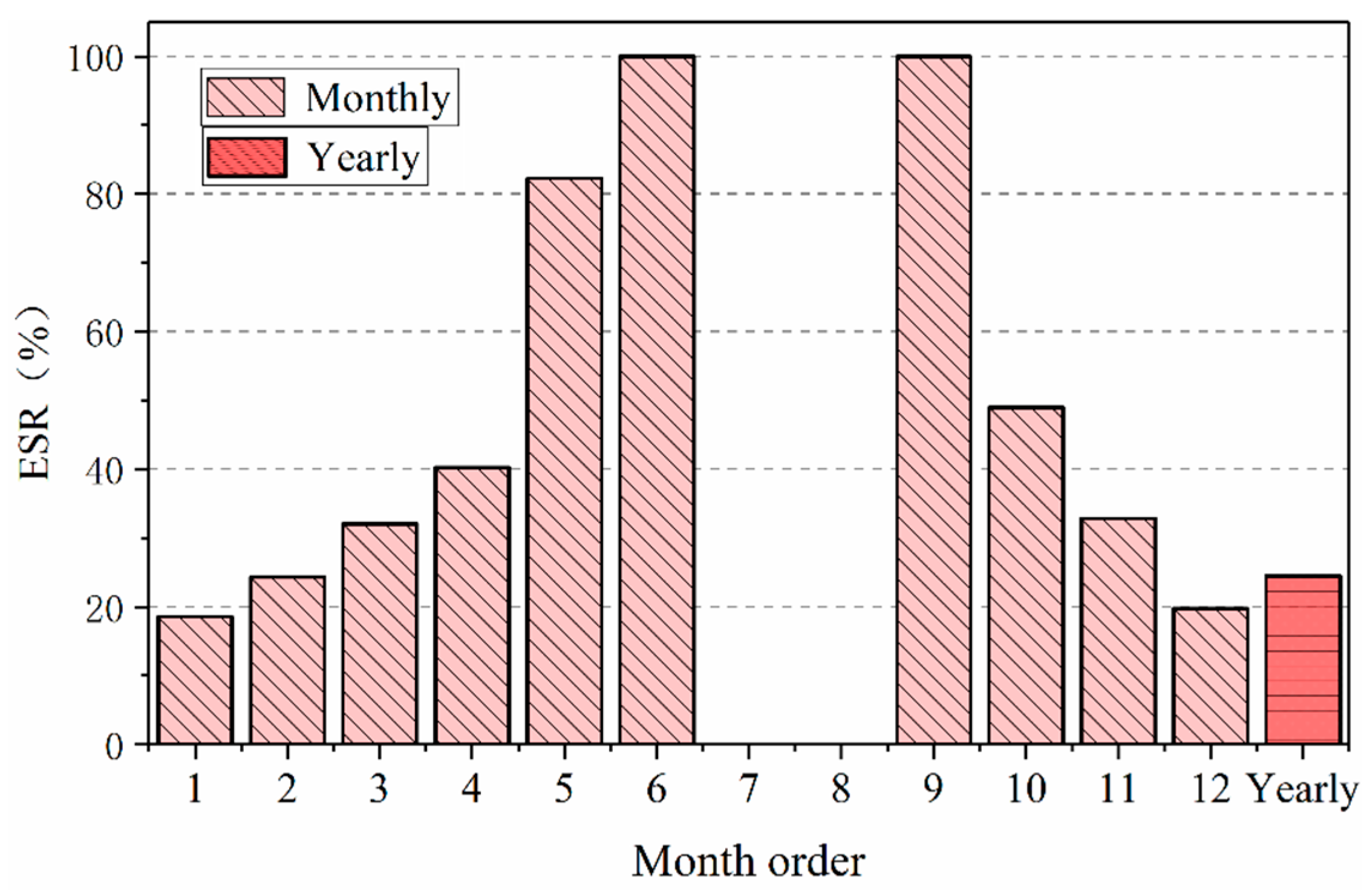
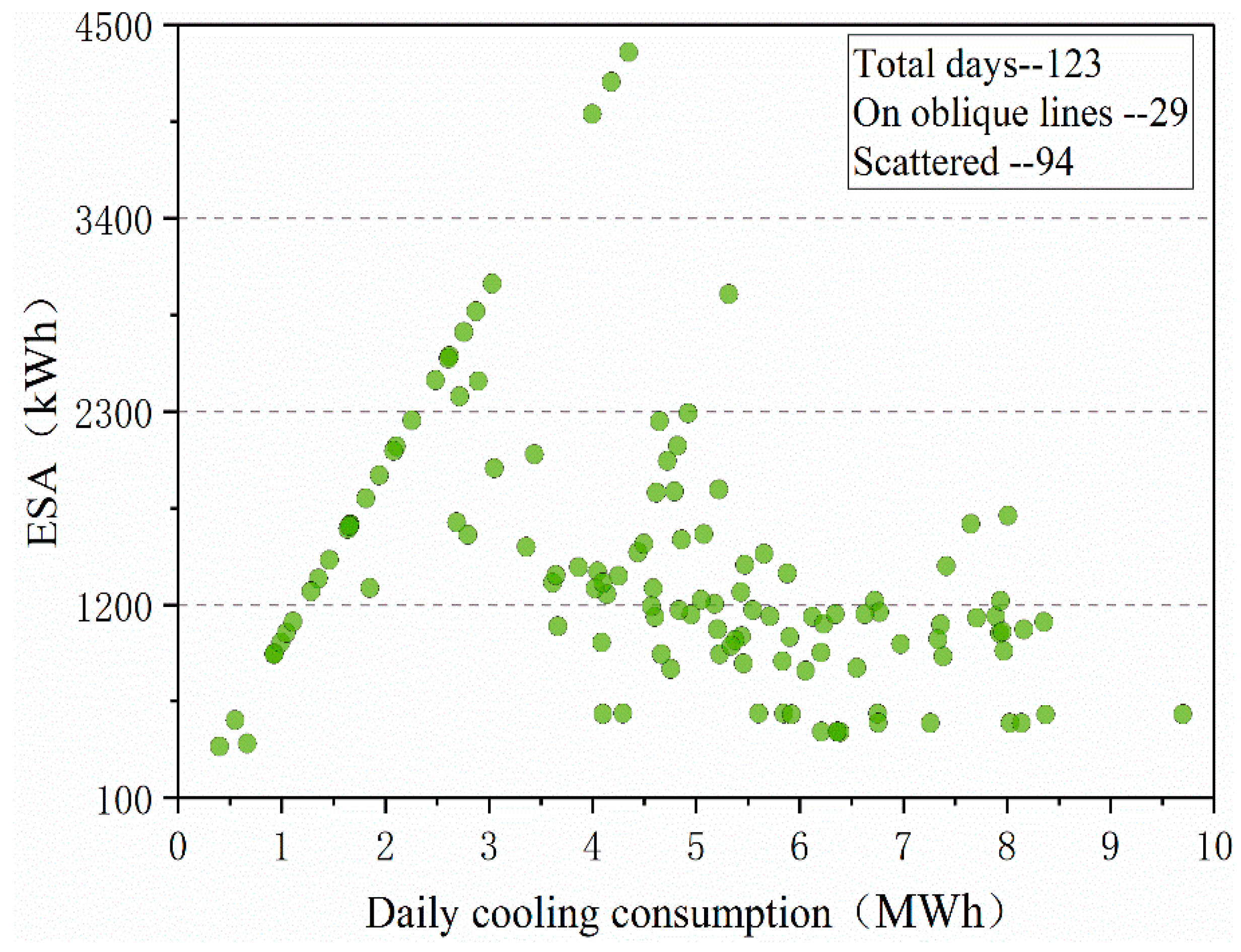
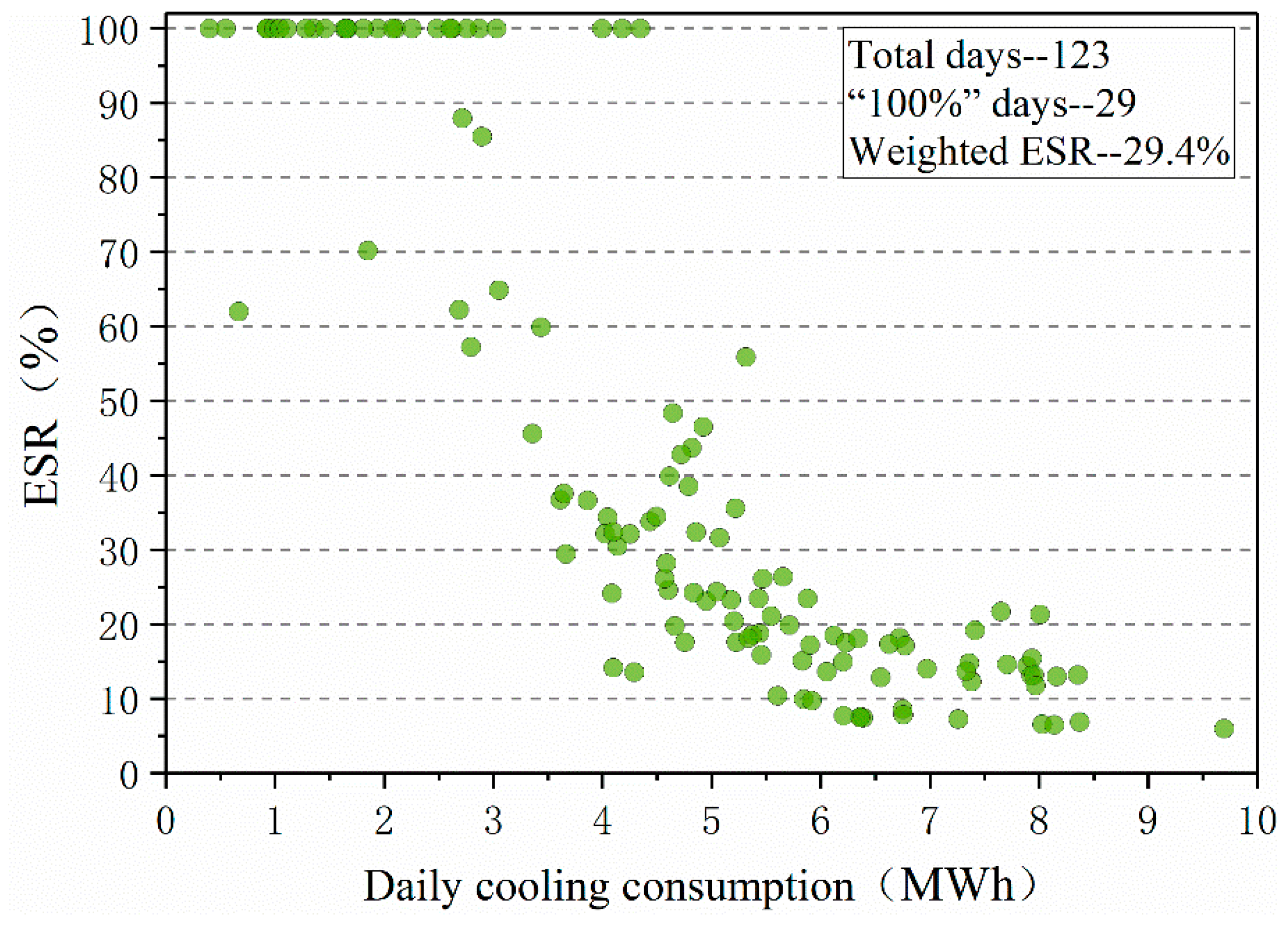
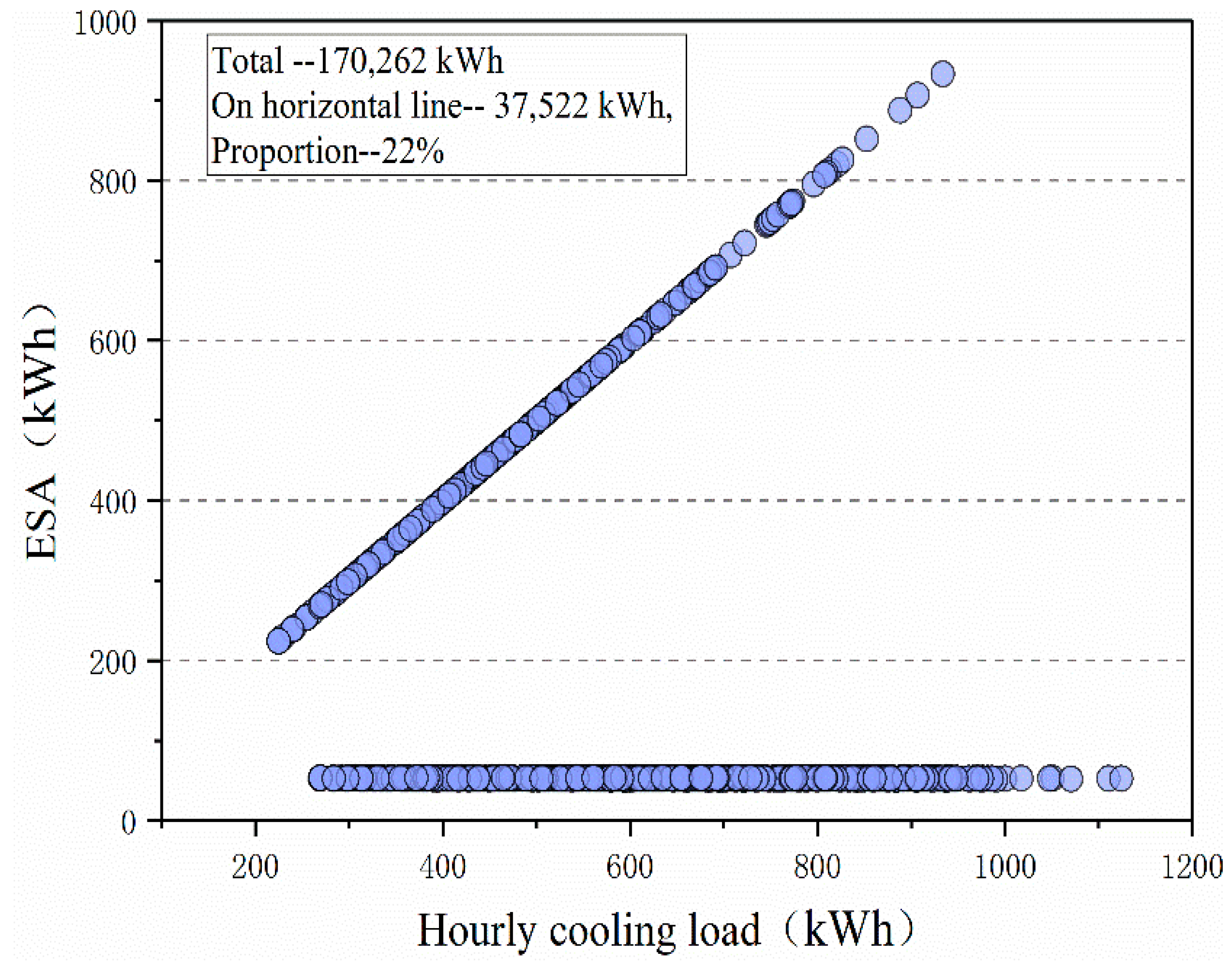
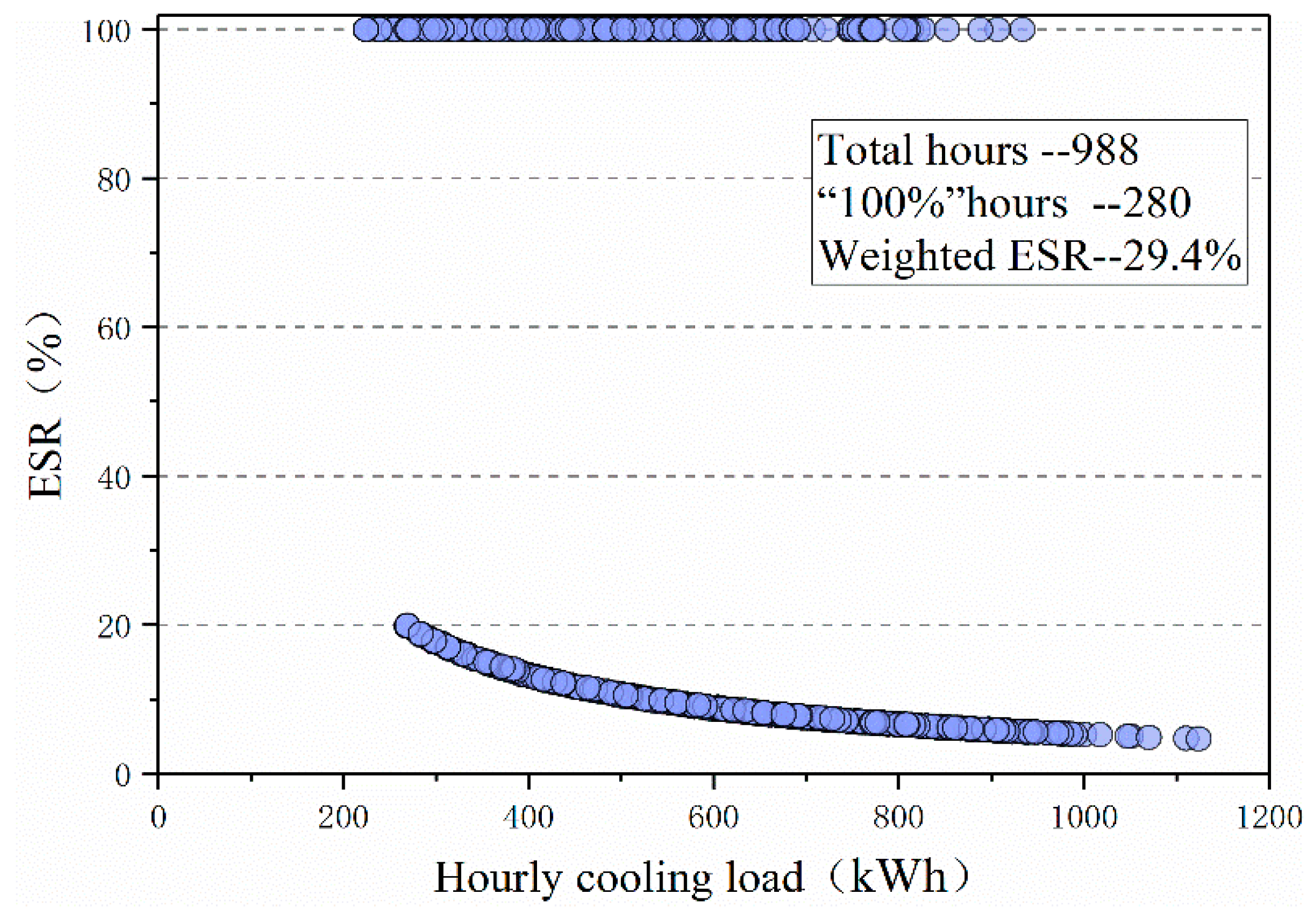
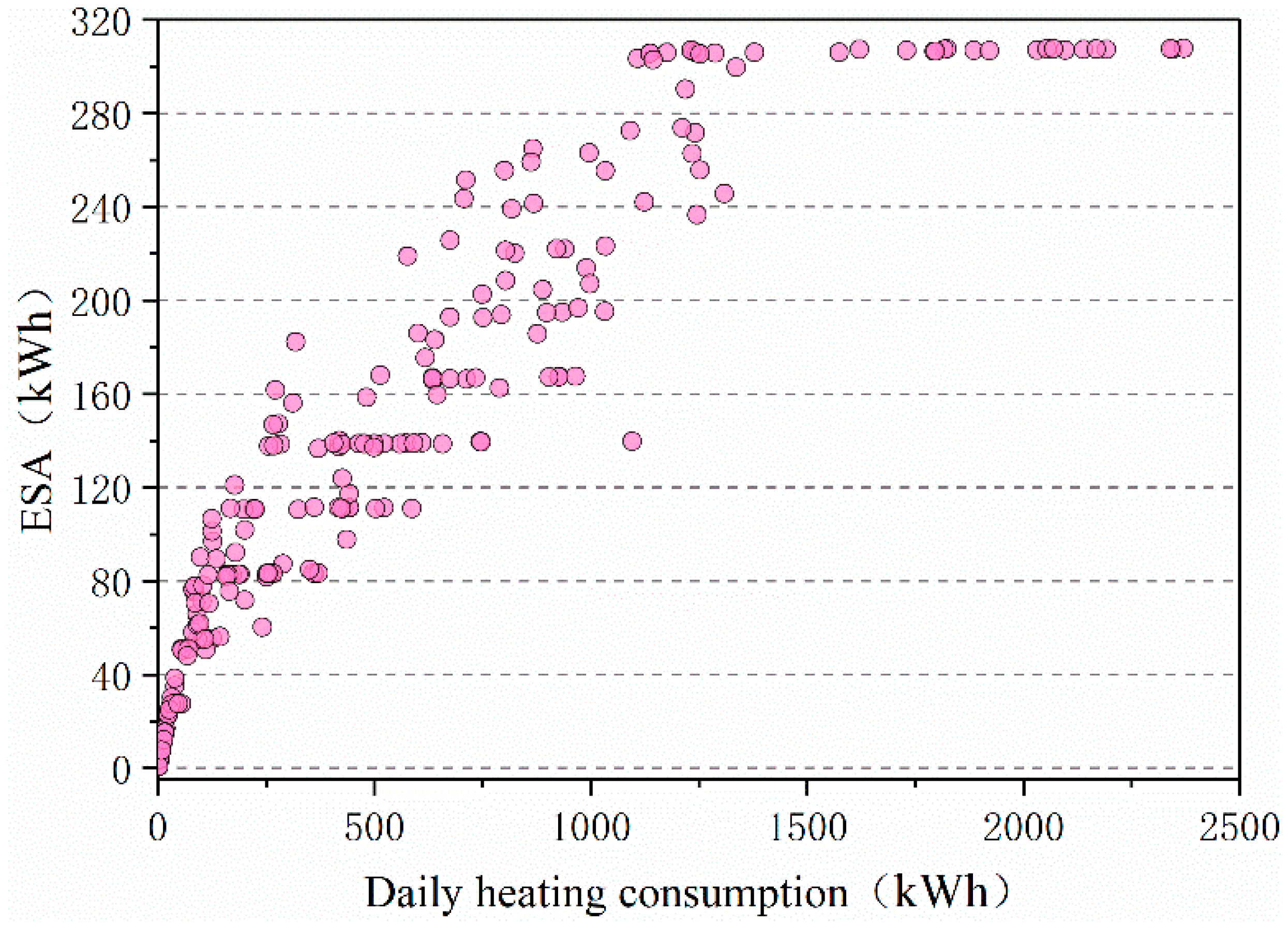

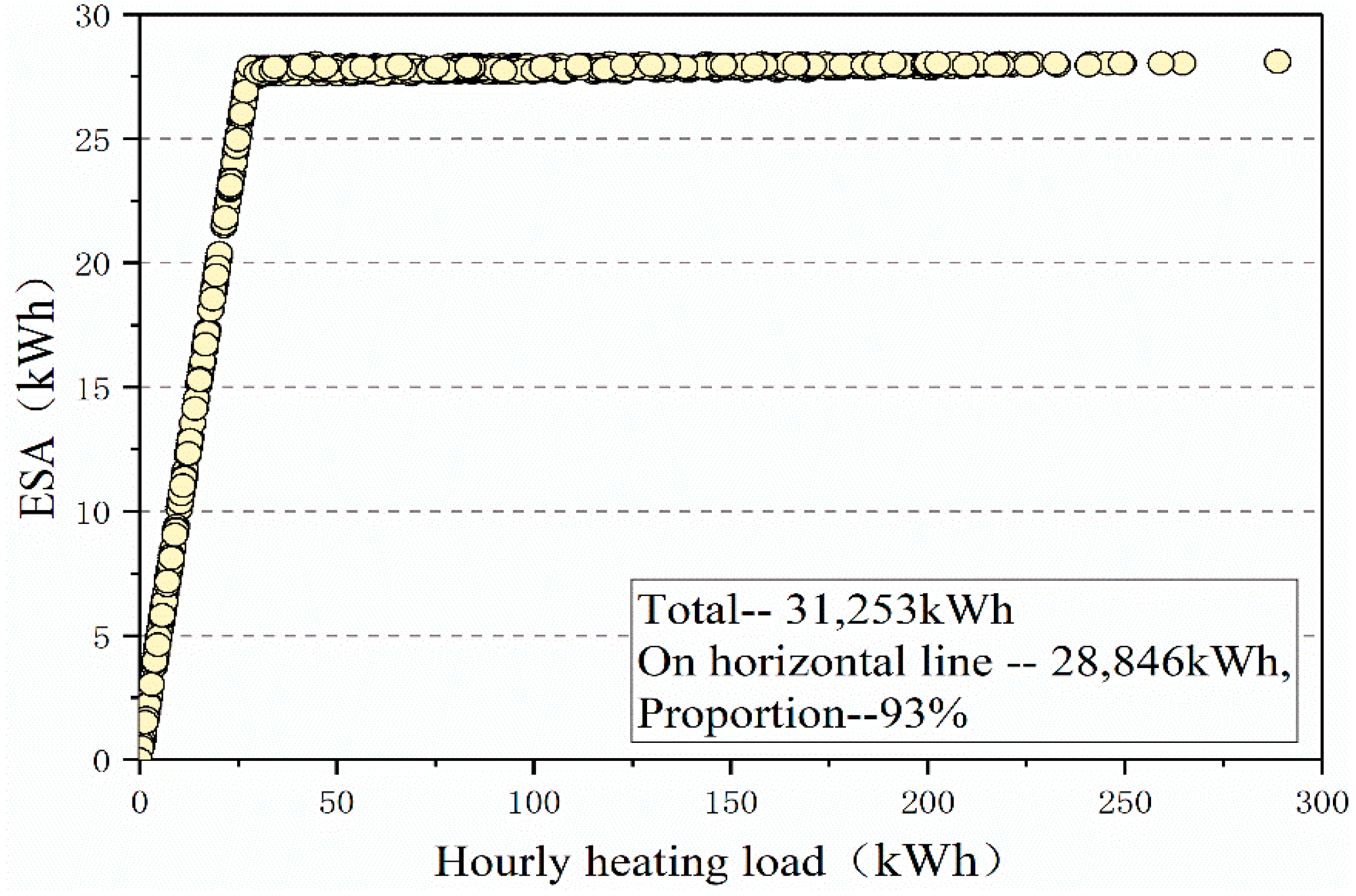
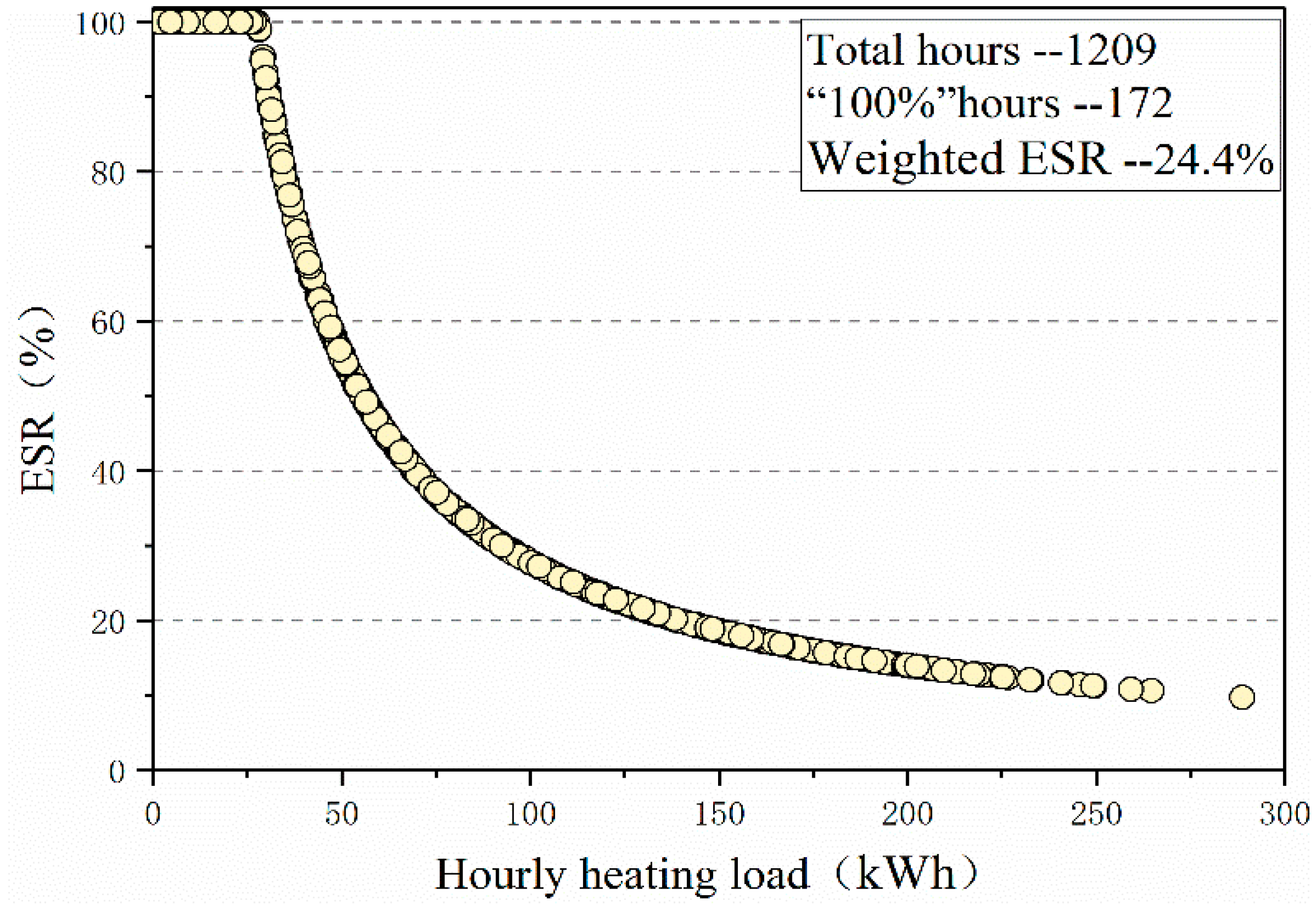

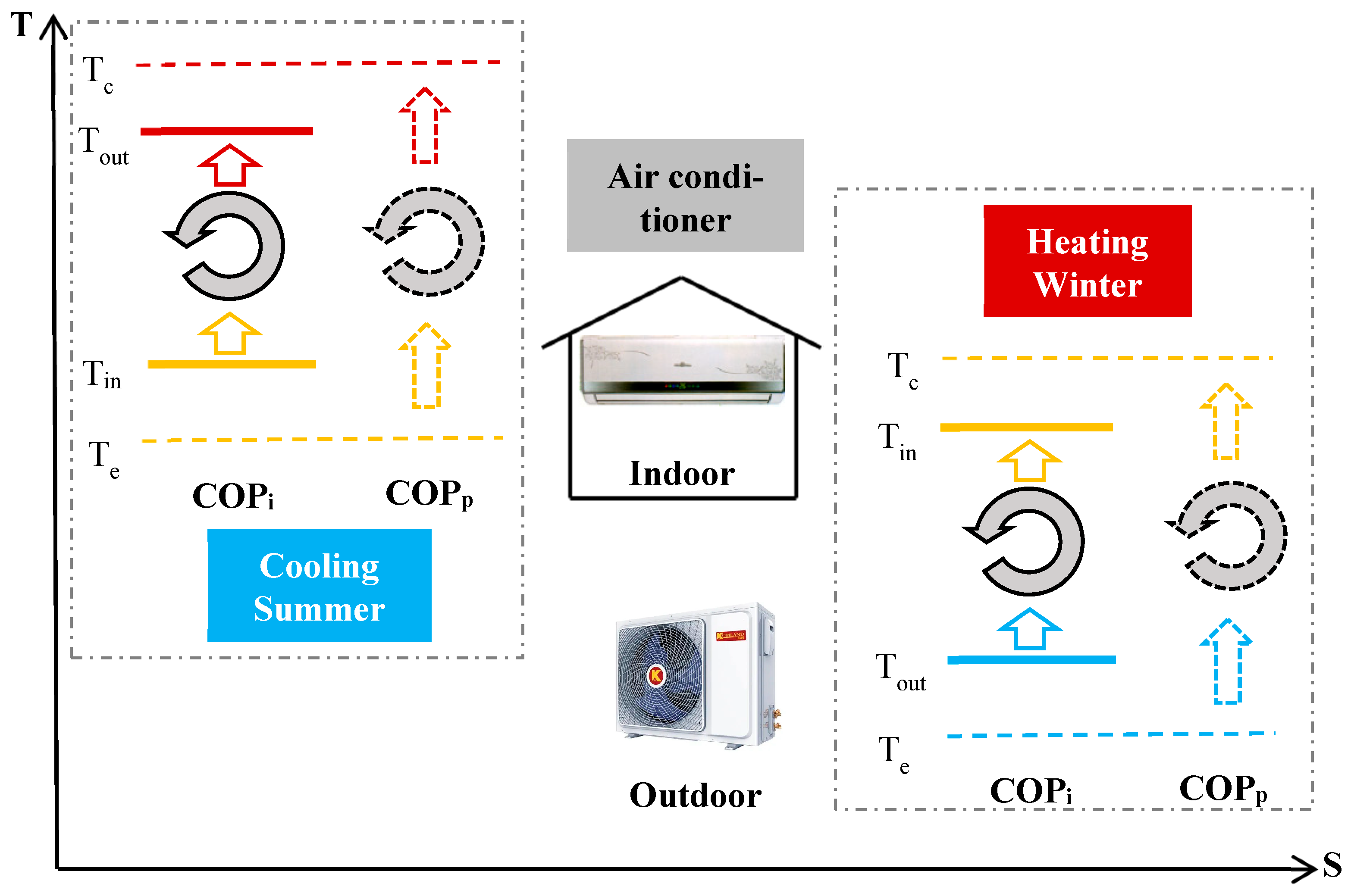
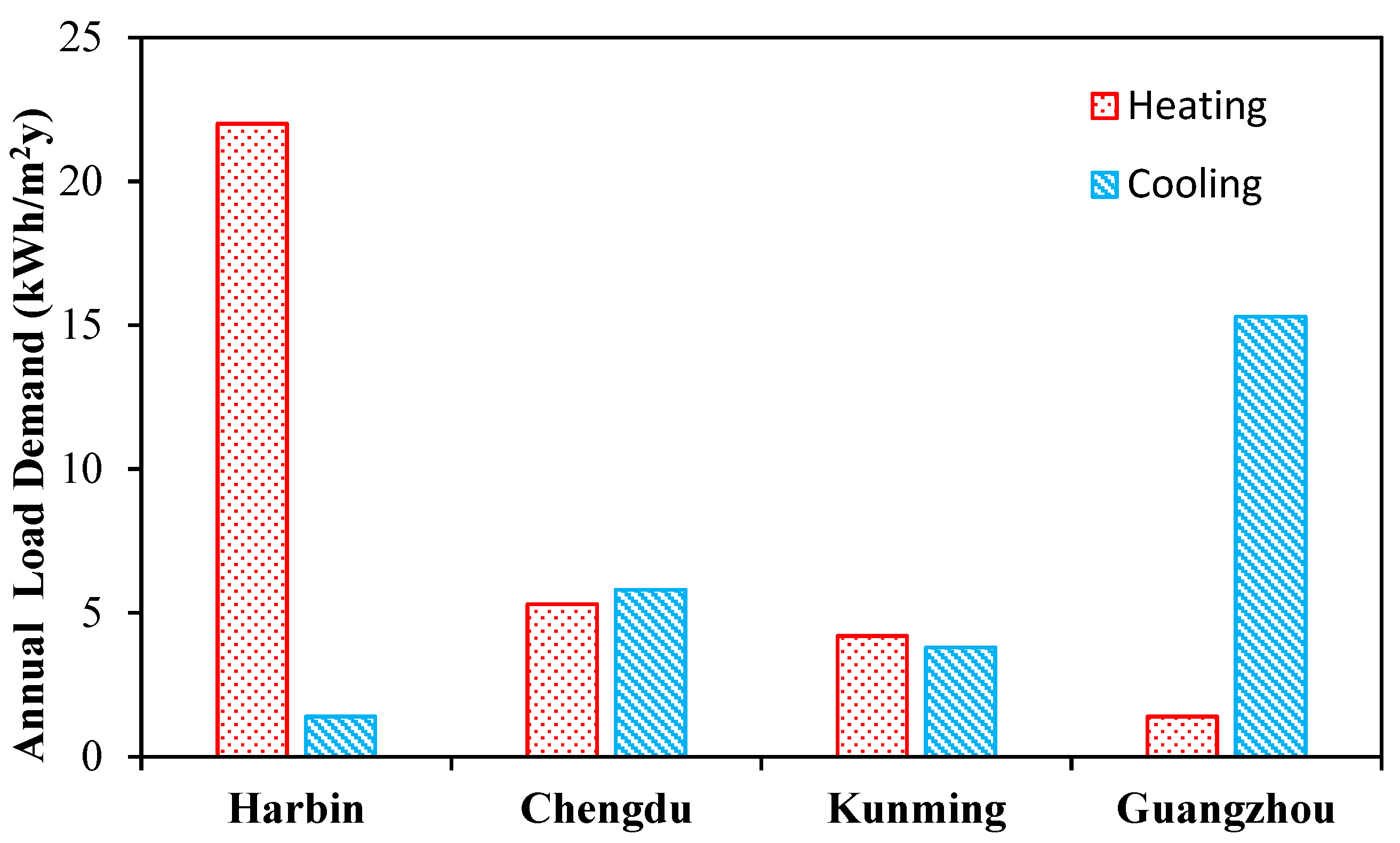
| Parameters | Value | Unit |
|---|---|---|
| total construction area | 11,247 | m2 |
| total area of the external envelope | 7173 | m2 |
| building volume | 40,727 | m3 |
| shape coefficient | 0.18 | |
| ratio of window to wall (W&E) | 0.34 | |
| ratio of window to wall (S&N) | 0.28 | |
| heat transfer coefficient of external wall | 1.07 | W/m2·K |
| heat transfer coefficient of external window | 3.5 | W/m2·K |
| heat transfer coefficient of roof | 0.43 | W/m2·K |
| heat transfer coefficient of ground | 1.2 | W/m2·K |
| absorption coefficient of solar radiation to the glazing | 0.08 | |
| penetration coefficient of solar radiation through the glazing | 0.8 | |
| shading coefficient | 1 |
| City | Latitude | Longitude | Climatic Region | Mean Temp (°C) | Precipitation (mm) | Solar Radiation (kWh/m2/day) |
|---|---|---|---|---|---|---|
| Harbin | 30°40′ N | 104°04′ E | Severe Cold | 2.92 | 34.92 | 3.75 |
| Chengdu | 30°40′ N | 104°04′ E | Hot Summer and Cold Winter | 9.84 | 79.5 | 3.16 |
| Kunming | 25°03′ N | 102°42′ E | Temperate | 13.26 | 83.00 | 4.19 |
| Guangzhou | 23°07′ N | 113°15′ E | Hot summer and Warm Winter | 20.36 | 144.83 | 3.80 |
Disclaimer/Publisher’s Note: The statements, opinions and data contained in all publications are solely those of the individual author(s) and contributor(s) and not of MDPI and/or the editor(s). MDPI and/or the editor(s) disclaim responsibility for any injury to people or property resulting from any ideas, methods, instructions or products referred to in the content. |
© 2023 by the authors. Licensee MDPI, Basel, Switzerland. This article is an open access article distributed under the terms and conditions of the Creative Commons Attribution (CC BY) license (https://creativecommons.org/licenses/by/4.0/).
Share and Cite
Xiong, J.; Chen, L.; Zhang, Y. Building Energy Saving for Indoor Cooling and Heating: Mechanism and Comparison on Temperature Difference. Sustainability 2023, 15, 11241. https://doi.org/10.3390/su151411241
Xiong J, Chen L, Zhang Y. Building Energy Saving for Indoor Cooling and Heating: Mechanism and Comparison on Temperature Difference. Sustainability. 2023; 15(14):11241. https://doi.org/10.3390/su151411241
Chicago/Turabian StyleXiong, Jianwu, Linlin Chen, and Yin Zhang. 2023. "Building Energy Saving for Indoor Cooling and Heating: Mechanism and Comparison on Temperature Difference" Sustainability 15, no. 14: 11241. https://doi.org/10.3390/su151411241
APA StyleXiong, J., Chen, L., & Zhang, Y. (2023). Building Energy Saving for Indoor Cooling and Heating: Mechanism and Comparison on Temperature Difference. Sustainability, 15(14), 11241. https://doi.org/10.3390/su151411241








